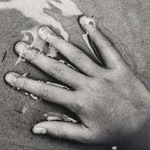Tips on using rodinal
-
Recently Browsing 0 members
- No registered users viewing this page.
-
Similar Content
-
- 22 replies
- 1,804 views
-
- 84 replies
- 6,700 views
-
- 17 replies
- 1,339 views
-
- 13 replies
- 647 views
-
- 29 replies
- 12,631 views
-


Recommended Posts
Join the conversation
You can post now and register later. If you have an account, sign in now to post with your account.
Note: Your post will require moderator approval before it will be visible.